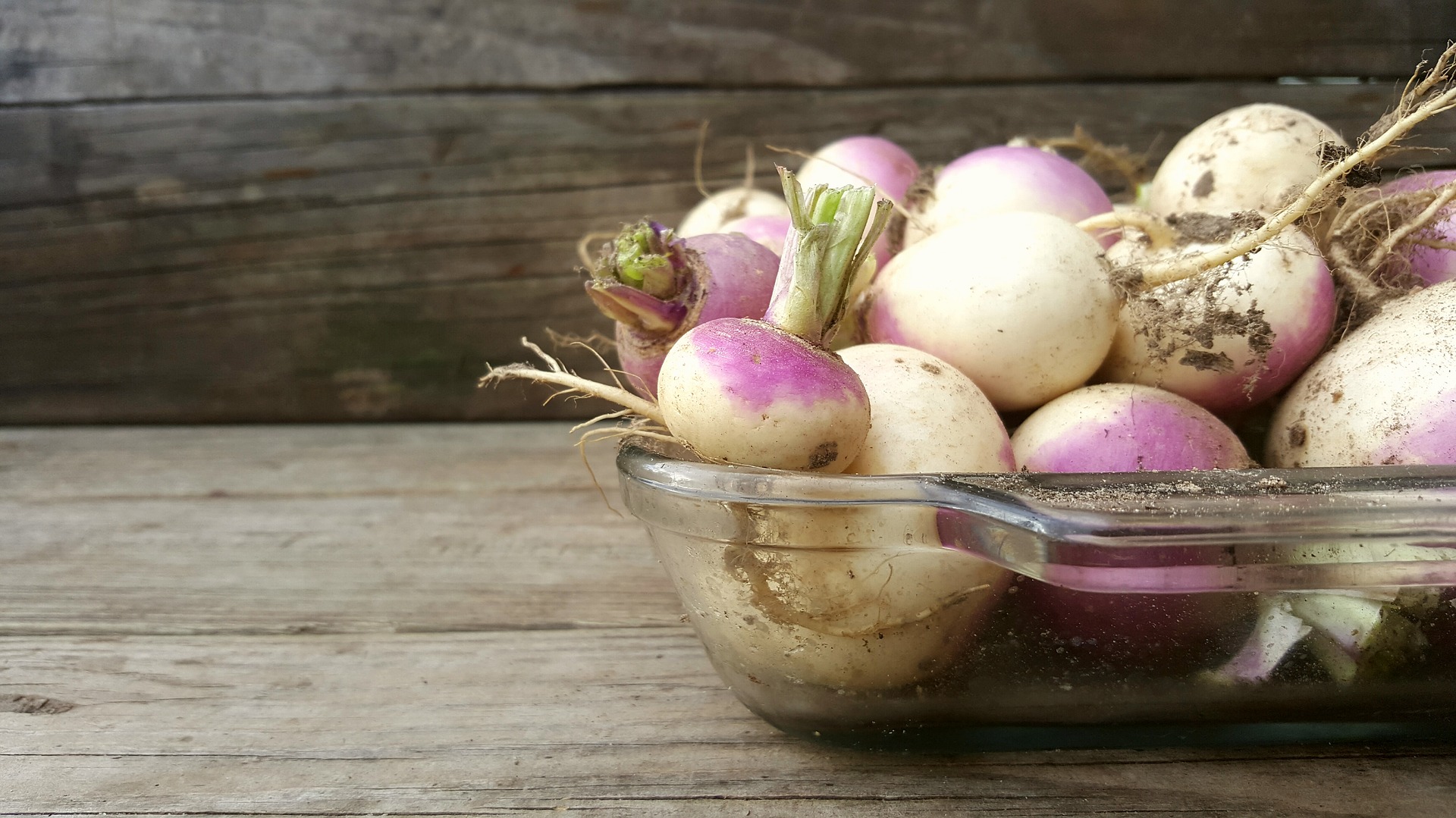The humble Turnip (Brassica rapa L.) are among the most commonly grown and widely adapted root crops. They belong within the broad Brassicaceae family which are cruciferous vegetables along with broccoli, collards, kale, and Brussels sprouts.
Turnips grow wild in Siberia. The ancient Greeks and Romans prized them highly. Turnip was a staple crop for numerous civilizations before the ubiquitous potato became popular. Turnips resemble potatoes in texture and appearance.
Turnips are usually creamy white in colour, with tinges of purple, green or even red.
The turnip bulb is rich in minerals and vitamins, especially folate, riboflavin, and niacin. They are high in vitamin C, which is a powerful antioxidant and acts an anti-inflammatory.
These vegetables also contain a lot of lutein, vitamin B9 (folate), and E. Turnip bulbs are rich in potassium, magnesium, phosphor, calcium iron, and dietary fibre.
To select a turnip, look for a smooth skin. They should feel firm and heavy with crisp green tops. Check for a sweet aroma. Turnips can be eaten raw, or they can be roasted in the oven, boiled, fried, steamed, mashed, or add them to soups, stews, and other dishes.
The leafy greens of the turnip are also edible, they are a good source of vitamin C, vitamin K, vitamin A, folate, calcium carotenoid, xanthin, and lutein.
They are also a very good source of B-complex group of vitamins such as folates, riboflavin, pyridoxine, pantothenic acid, and thiamin. Use the greens for cooking or in a salad.
Turnip Chips With Bush Food Flavours
Enjoy baked turnip chips as a health snack infused with Australian Bush food flavours at your next party.
Ingredients
2 large turnips skin peeled
¼ teaspoon salt bush
½ teaspoon native thyme
1/4 teaspoon pepper berry
3 tablespoons olive oil
1/2 teaspoon sea salt (optional)
Instructions
- Clean the turnip thoroughly by scrubbing the skin with a vegetable brush under cold running water.
- Preheat oven to 200°C and line two baking tins with tin foil. Spray the tin foil with non-stick olive oil cooking spray.
- Uniformly slice the turnips thinly into chips, and place in a large mixing bowl.
- Drizzle turnip slices with olive oil, saltbush, native thyme, and pepper berry. Mix well to coat evenly.
- Spread chips in an even layer on baking sheets. Do not to over-crowd.
- Bake for 20-25 minutes, turning once halfway to allow for even cooking. Bake until the chips are golden.
- Cool for 10 minutes to continue crisping then serve.
Enjoy!
You can find much more information on living a holistic lifestyle in these free magazines and on our YouTube channel.
 Irene Vervliet – Naturopathic Doctor
Irene Vervliet – Naturopathic Doctor
References
“Learning more about the food we eat & how it affects the way we live” accessed 17/5/2017 at
http://horticulturecenter.illinoisstate.edu/gardens/documents/NutraceuticalGuidefull_000.pdf
“What Is Turnip Good For?” accessed 17/5/2017 at http://foodfacts.mercola.com/turnip.html
“Turnips” accessed 16/5/2017 at http://www.nutrition-and-you.com/turnips.html
“Turnips “accessed 16/5/2017 at https://www.organicfacts.net/health-benefits/vegetable/turnips.html
“Turnips” accessed 18/5/2017 at http://www.medicalnewstoday.com/articles/284815.php
“Turnips” accessed 16/5/2017 https://www.bbcgoodfood.com/glossary/turnip
Health Benefits of Turnips” accessed 16/5/2017 at http://callmyfamilydoctor.com/blog/health-benefits-of-turnips/
“Turnip health benefits” accessed 16/5/2017 at http://www.whfoods.com/genpage.php?tname=foodspice&dbid=144#healthbenefits






